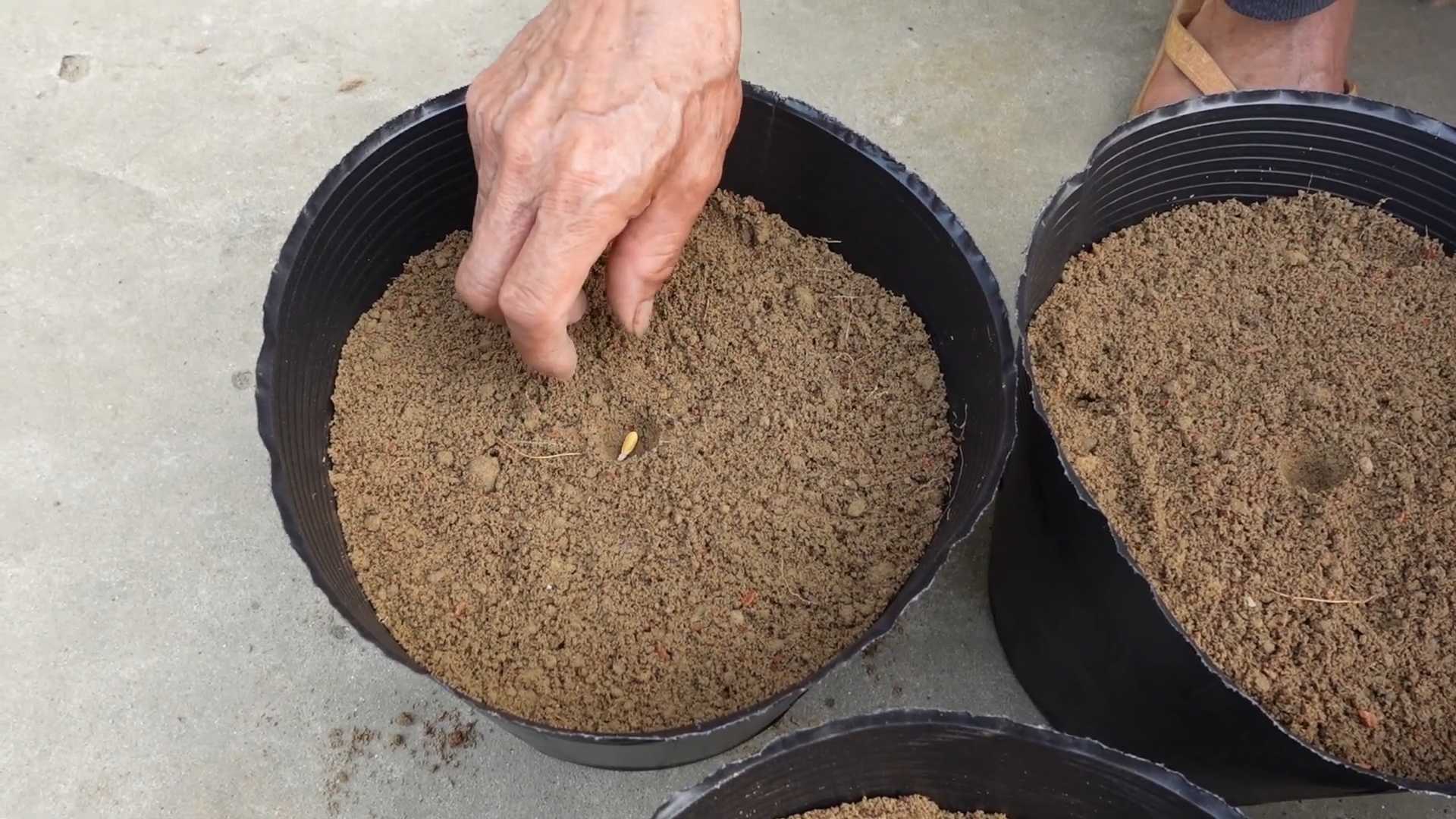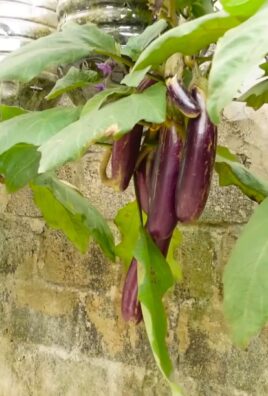Grow cantaloupes at home? Absolutely! Imagine biting into a juicy, sun-ripened cantaloupe that you nurtured from seed to fruit, right in your own backyard. Forget those bland, store-bought melons – we’re talking about a flavor explosion that only comes from homegrown goodness. For centuries, cantaloupes have been cherished for their sweetness and refreshing qualities, gracing tables from ancient Egypt to modern-day picnics.
But let’s be honest, the thought of cultivating these delicious melons can seem a little daunting. Maybe you’ve tried before and ended up with small, tasteless fruits, or perhaps you’re just not sure where to start. That’s where this DIY guide comes in! I’m here to share my tried-and-true secrets and simple hacks to help you grow cantaloupes at home successfully, even if you have limited space or gardening experience.
This isn’t just about growing a melon; it’s about connecting with nature, enjoying the satisfaction of nurturing something from seed to harvest, and savoring the unparalleled taste of homegrown produce. Plus, think of the bragging rights! Get ready to impress your friends and family with your cantaloupe-growing prowess. Let’s dive in and unlock the secrets to a bountiful cantaloupe harvest!

Growing Cantaloupes at Home: A Sweet DIY Project
Hey there, fellow gardening enthusiasts! Ever dreamt of biting into a juicy, homegrown cantaloupe, bursting with flavor that store-bought melons just can’t match? Well, dream no more! Growing cantaloupes at home is totally achievable, even if you’re a beginner gardener. I’m going to walk you through everything you need to know, from choosing the right seeds to harvesting your delicious reward. Let’s get started!
Choosing Your Cantaloupe Variety
First things first, let’s talk about cantaloupe varieties. There are tons of options out there, each with its own unique characteristics. Here are a few popular choices:
* ‘Hales Best Jumbo’: A classic choice, known for its sweet flavor and relatively early maturity.
* ‘Athena’: A disease-resistant variety that produces large, flavorful melons.
* ‘Ambrosia’: A super-sweet and aromatic cantaloupe, perfect for eating fresh.
* ‘Minnesota Midget’: A smaller variety that’s ideal for smaller gardens or containers.
Consider your climate, garden size, and personal taste preferences when making your selection. I personally love ‘Hales Best Jumbo’ for its reliable flavor and ease of growing.
Preparing Your Garden Bed
Cantaloupes are sun-loving, nutrient-hungry plants, so proper bed preparation is crucial. Here’s what you need to do:
* Sunlight: Choose a spot that gets at least 6-8 hours of direct sunlight per day. More is always better!
* Soil: Cantaloupes thrive in well-drained, fertile soil with a pH between 6.0 and 6.8.
* Soil Amendment: Amend your soil with plenty of organic matter, such as compost or well-rotted manure. This will improve drainage, fertility, and water retention. I usually add a generous layer of compost, about 2-3 inches thick, and work it into the top 6-8 inches of soil.
* Raised Beds (Optional): Consider growing your cantaloupes in raised beds. This can improve drainage and warm the soil faster in the spring.
Starting Your Cantaloupe Seeds
You can either direct sow your cantaloupe seeds or start them indoors. Starting indoors gives you a head start, especially in cooler climates.
Starting Seeds Indoors
1. Timing: Start your seeds about 3-4 weeks before the last expected frost in your area.
2. Containers: Use peat pots or biodegradable containers. Cantaloupes don’t like having their roots disturbed, so these types of containers make transplanting easier.
3. Soil: Fill the containers with a good quality seed-starting mix.
4. Sowing: Plant 2-3 seeds per container, about ½ inch deep.
5. Watering: Water gently to moisten the soil, but don’t overwater.
6. Warmth: Keep the containers in a warm location, ideally around 70-80°F (21-27°C). A heat mat can be helpful.
7. Light: Once the seedlings emerge, provide them with plenty of light. A sunny windowsill or grow lights will work.
8. Thinning: Once the seedlings have a few true leaves, thin them to one strong seedling per container.
Direct Sowing Seeds
1. Timing: Wait until the soil has warmed to at least 65°F (18°C) before direct sowing. This is usually a few weeks after the last expected frost.
2. Planting: Sow the seeds about 1 inch deep and 18-24 inches apart.
3. Watering: Water gently to moisten the soil.
4. Protection: Consider using row covers to protect the seedlings from pests and cold weather.
Transplanting Your Cantaloupe Seedlings
If you started your seeds indoors, it’s time to transplant them to your garden bed.
1. Hardening Off: Before transplanting, you need to harden off your seedlings. This means gradually exposing them to outdoor conditions over a period of 7-10 days. Start by placing them in a sheltered location for a few hours each day, gradually increasing the amount of time they spend outdoors.
2. Transplanting: Choose a cloudy day to transplant your seedlings. This will help reduce transplant shock.
3. Planting: Dig a hole that’s slightly larger than the container. Gently remove the seedling from the container, being careful not to disturb the roots. If you used peat pots, you can plant the entire pot.
4. Spacing: Space the seedlings 18-24 inches apart.
5. Watering: Water thoroughly after transplanting.
6. Mulching: Apply a layer of mulch around the plants to help retain moisture, suppress weeds, and regulate soil temperature. I like to use straw or shredded leaves.
Caring for Your Cantaloupe Plants
Once your cantaloupe plants are in the ground, it’s time to provide them with the care they need to thrive.
* Watering: Cantaloupes need consistent watering, especially during hot, dry weather. Water deeply and regularly, aiming for about 1-2 inches of water per week. Avoid overhead watering, as this can promote fungal diseases. Drip irrigation is a great option.
* Fertilizing: Cantaloupes are heavy feeders, so regular fertilization is important. Use a balanced fertilizer, such as 10-10-10, according to the package directions. You can also side-dress your plants with compost or well-rotted manure every few weeks.
* Weeding: Keep your garden bed free of weeds. Weeds compete with cantaloupe plants for water and nutrients.
* Pest Control: Keep an eye out for pests, such as aphids, squash bugs, and cucumber beetles. Handpick pests whenever possible. You can also use insecticidal soap or neem oil to control infestations.
* Disease Control: Cantaloupes are susceptible to fungal diseases, such as powdery mildew and downy mildew. To prevent these diseases, provide good air circulation, avoid overhead watering, and apply a fungicide if necessary.
* Pruning: While not essential, pruning can improve air circulation and encourage fruit production. Remove any yellowing or diseased leaves. You can also pinch off the tips of the vines to encourage branching.
Supporting Your Cantaloupe Vines
As your cantaloupe vines grow, they may need some support. This is especially important for larger varieties.
* Trellising: Trellising is a great way to save space and improve air circulation. You can use a sturdy trellis or fence to support the vines.
* Slings: If you’re growing large cantaloupes on a trellis, you may need to provide additional support for the fruits. You can use slings made from pantyhose or netting to support the melons as they grow. This will prevent them from breaking off the vine.
Harvesting Your Cantaloupes
Harvesting your cantaloupes at the right time is crucial for getting the best flavor. Here’s how to tell when they’re ready:
* Color: The skin of the cantaloupe should turn from green to a tan or yellowish color.
* Aroma: The cantaloupe should have a sweet, musky aroma.
* Stem: The stem should easily slip from the vine with a gentle tug. This is known as the “full slip” stage.
* Sound: When you tap the cantaloupe, it should sound hollow.
Once your cantaloupe is ripe, cut it from the vine with a sharp knife. Store it in the refrigerator for up to a week.
Troubleshooting Common Problems
Even with the best care, you may encounter some problems when growing cantaloupes. Here are a few common issues and how to address them:
* Poor Fruit Set: This can be caused by a lack of pollination. Attract pollinators to your garden by planting flowers that attract bees and other beneficial insects. You can also hand-pollinate the flowers if necessary.
* Cracked Fruits: This can be caused by inconsistent watering. Water deeply and regularly, especially during dry spells.
* Bitter Fruits: This can be caused by stress, such as drought or extreme heat. Provide your plants with adequate water and shade during hot weather.
* Pest Infestations: Regularly inspect your plants for pests and take action promptly.
* Disease Problems: Prevent fungal diseases by providing good air circulation, avoiding overhead watering, and applying a fungicide if necessary.
Enjoying Your Homegrown Cantaloupes
Congratulations! You’ve successfully grown your own cantaloupes. Now it’s time to enjoy the fruits (or melons!) of your labor.
*

Conclusion
So, there you have it! Growing cantaloupes at home, while it might seem daunting at first, is entirely achievable and incredibly rewarding. Forget those bland, mass-produced melons from the grocery store. Imagine sinking your teeth into a juicy, sun-ripened cantaloupe, bursting with flavor and sweetness, knowing you nurtured it from seed to table. This isn’t just about saving money; it’s about experiencing the joy of gardening, connecting with nature, and enjoying the unparalleled taste of homegrown produce.
This DIY trick, focusing on proper soil preparation, strategic watering, and diligent pest control, is a game-changer. It’s the key to unlocking a bountiful harvest of delicious cantaloupes, even in less-than-ideal conditions. By following these simple steps, you’ll be well on your way to enjoying the fruits (or rather, melons!) of your labor.
But don’t stop there! Experiment with different cantaloupe varieties to find your favorite. Try growing ‘Athena’ for its disease resistance, ‘Hales Best Jumbo’ for its classic flavor, or ‘Honey Rock’ for its exceptional sweetness. Consider companion planting with marigolds to deter pests or basil to improve flavor. You can even try vertical gardening techniques to maximize space if you have a small yard or balcony.
The possibilities are endless! The satisfaction of nurturing a cantaloupe from a tiny seed to a plump, flavorful melon is truly unmatched. It’s a testament to your gardening skills and a delicious reward for your efforts.
We urge you to give this DIY cantaloupe growing method a try. Don’t be afraid to get your hands dirty and embrace the learning process. Gardening is all about experimentation and discovery. And once you’ve tasted your first homegrown cantaloupe, you’ll be hooked!
We’re confident that with a little patience and dedication, you’ll be enjoying a steady supply of delicious, homegrown cantaloupes in no time. And we want to hear all about your experience! Share your photos, tips, and triumphs in the comments below. Let’s build a community of cantaloupe enthusiasts and learn from each other. What varieties did you try? What challenges did you face? What secrets did you discover? Your insights could help other gardeners achieve their cantaloupe-growing dreams.
So, grab your seeds, prepare your soil, and get ready to embark on a delicious adventure. Happy growing! Remember, the sweetest cantaloupes are the ones you grow yourself. This DIY trick is your passport to a summer filled with juicy, flavorful, and incredibly satisfying homegrown cantaloupes. Don’t miss out!
Frequently Asked Questions (FAQ)
What is the best time to plant cantaloupe seeds?
The ideal time to plant cantaloupe seeds is after the last frost when the soil temperature has warmed to at least 60°F (15°C). Cantaloupes are warm-season crops and are highly susceptible to frost damage. In most regions, this typically falls between late spring and early summer. You can start seeds indoors 3-4 weeks before the last expected frost to get a head start, but be sure to harden them off gradually before transplanting them outdoors. Starting indoors can be especially helpful in regions with shorter growing seasons.
How much sunlight do cantaloupes need?
Cantaloupes require at least 6-8 hours of direct sunlight per day to thrive. Sunlight is essential for photosynthesis, which fuels the growth and development of the plant and the production of sweet, flavorful melons. Choose a planting location that receives ample sunlight throughout the day. If you live in a particularly hot climate, some afternoon shade may be beneficial to prevent the plants from overheating.
What kind of soil is best for growing cantaloupes?
Cantaloupes prefer well-drained, fertile soil that is rich in organic matter. The ideal soil pH is between 6.0 and 6.8. Before planting, amend the soil with compost, aged manure, or other organic materials to improve drainage, fertility, and water retention. Avoid heavy clay soils, as they can become waterlogged and inhibit root growth. If you have clay soil, consider growing cantaloupes in raised beds or containers.
How often should I water my cantaloupe plants?
Cantaloupe plants need consistent moisture, especially during fruit development. Water deeply and regularly, aiming to keep the soil consistently moist but not waterlogged. Water at the base of the plant to avoid wetting the foliage, which can increase the risk of fungal diseases. During hot, dry weather, you may need to water more frequently. A good rule of thumb is to water when the top inch of soil feels dry to the touch. Drip irrigation or soaker hoses are excellent options for delivering water directly to the roots.
How do I know when a cantaloupe is ripe?
Determining when a cantaloupe is ripe can be tricky, but there are a few key indicators to look for. First, the skin color should change from green to a tan or yellowish hue. Second, the stem should easily slip from the vine with a gentle tug. This is known as the “full slip” stage. Third, the melon should have a fragrant aroma. Finally, the blossom end (the opposite end from the stem) should be slightly soft to the touch. Avoid picking cantaloupes that are still hard or green, as they will not ripen properly off the vine.
What are some common pests and diseases that affect cantaloupes?
Cantaloupes are susceptible to a variety of pests and diseases, including aphids, squash bugs, cucumber beetles, powdery mildew, and fusarium wilt. Regularly inspect your plants for signs of infestation or disease. Use organic pest control methods, such as insecticidal soap or neem oil, to control pests. To prevent diseases, ensure good air circulation, avoid overhead watering, and choose disease-resistant varieties. Crop rotation can also help to reduce the buildup of soilborne pathogens.
Can I grow cantaloupes in containers?
Yes, you can grow cantaloupes in containers, but you’ll need to choose a large container (at least 20 gallons) and provide adequate support for the vines. Select a dwarf or bush variety of cantaloupe that is better suited for container growing. Use a high-quality potting mix and fertilize regularly with a balanced fertilizer. Ensure the container has good drainage and is placed in a sunny location. You may also need to hand-pollinate the flowers if you’re not seeing fruit set.
How can I improve the sweetness of my cantaloupes?
Several factors can influence the sweetness of cantaloupes, including sunlight, water, and soil fertility. Ensure your plants receive ample sunlight and are watered consistently. Avoid overwatering, especially as the fruits are ripening, as this can dilute the sugars. Fertilize with a potassium-rich fertilizer to promote fruit development and sweetness. You can also try pinching off some of the smaller, less developed fruits to allow the plant to focus its energy on ripening the remaining melons.
What are some good companion plants for cantaloupes?
Companion planting can be a beneficial way to improve the health and productivity of your cantaloupe plants. Some good companion plants for cantaloupes include marigolds (to deter pests), basil (to improve flavor and repel insects), nasturtiums (to attract beneficial insects), and radishes (to deter squash vine borers). Avoid planting cantaloupes near potatoes, as they can compete for nutrients.
How do I save seeds from my cantaloupes?
Saving seeds from your cantaloupes is a great way to preserve your favorite varieties and save money. To save seeds, allow the cantaloupe to fully ripen on the vine. Scoop out the seeds and pulp, and rinse them thoroughly under running water to remove any remaining pulp. Spread the seeds out on a paper towel to dry completely. Once dry, store the seeds in an airtight container in a cool, dark, and dry place. Properly stored cantaloupe seeds can remain viable for several years.





Leave a Comment